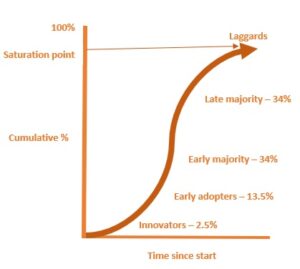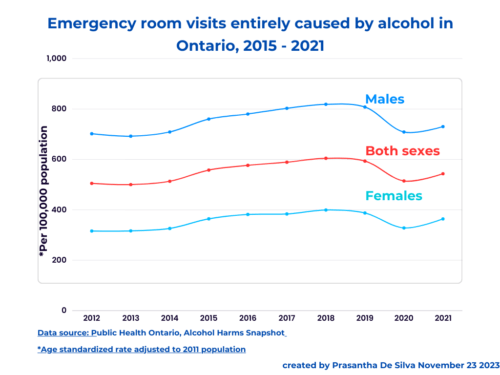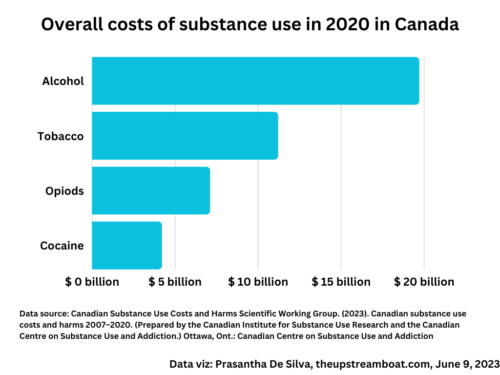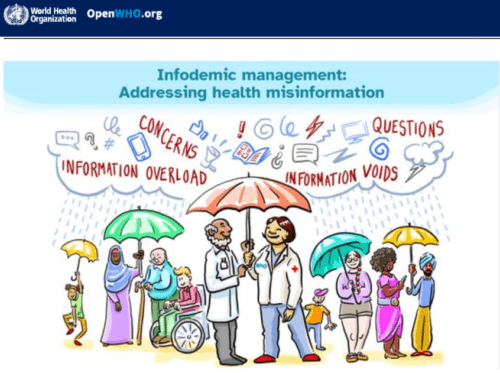Derek Siver’s first follower:
One evening, a crowd numbering about 100 were sitting and chatting in a greenery garden in front of a beach.
Suddenly a young lad stood out, marched forward, and started to dance according to the tune of the music playing behind.
He was without his shirt.
A little while later, another guy joined him.
Another few minutes later, about 4 – 5, both boys and girls joined them.
Soon,
another 10 – 20 more stood and were them;
all were dancing and enjoying themselves together;
later almost all were there; few of them did not join the massive crowd – they were still sitting.
This is all about the Diffusion of Innovation Theory and leadership.
The above short description is from the super famous Derek Sivers’ short video clip that I watched on YouTube.
You can watch it through this link.
Since 2010, about 5.3 million views have been recorded to date!
Or, you can listen to his TED talk on the same video clip through this link.
It was all about leadership!
His TED talk was about how to start a movement.
When we announce a novel idea to an audience, how might they respond to it?
How many may grasp the idea?
How many will reject it?
How the rest of the crowd will react?
Diffusion of Innovation Theory
We can explain the behavior of this group of people with the help of the famous “Diffusion of Innovation Theory”.
This theory was the brainchild of the late Everett Rogers.
He published its first edition in 1962. It followed four more editions until 2003 before his demise in 2004.
According to the theory, whenever a new idea, product or service is introduced, we can identify five groups of people in regard to the different ways we respond to.
You can watch and listen to his speech here.
S – curve
So, a pattern exists whenever a new idea, product, service or whatever comes to light in front of an audience. As I mentioned earlier, we can recognize five groups according to Rogers.

Innovators(Enthusiasts)
Innovators are risk-taking futurists; they promptly understand the usefulness of the innovation and are willing to take the risk.
Not only that, they are eager to be partners in the project.
They constitute 2.5% of the target population.
The leading dancer and his first followers in Derek’s video are innovators.
Early adopters
This segment of the audience steps out only if they are convinced about the benefits of the innovation. They are economically and socially well off, hence not much cost-sensitive.
They constitute 13.5% of the target population.
Moreover, this group possesses specific crucial characteristics –
they are
- opinion leaders,
- Role models, prefer to be trendsetters and even adventurers.
The early majority (Pragmatists)
If we can forge really strong connections with the previous two groups –
innovators and early adopters –
the group next in line are the early majorities.
They are larger in numbers than the previous group, as we can appreciate, about 34% of our target population.
They are “pragmatists” because they do not take action without solid evidence;
they are cost-sensitive;
they do not take risks; they prefer simple tasks
However,
they need an external push to take action,
The late majority (Conservatives)
This group is much larger than the early majority group, which consists of 34%.
However,
they are cautious and will not go with the crowd until they are convinced with others who are around them must have joined the new trend and are also subject to heavy peer pressure.
They are very cost-sensitive.
Reluctantly,
they might join with the rest of the crowd because they fear they will not be fitting into the mainstream.
But,
they could easily be influenced by laggards – the last group. Be careful!
Laggards (Skeptics)
Although, very few in number, this is a very critical group that influences – negatively – the movement or project’s success.
They are unlikely to join the rest; instead, they will be very critical and likely to influence the late majority.
They tend to say this is not the way we have always been doing things. They are suspicious of new things.
They need much more support, and mentoring.
This group is lesser in numbers – 16% – than the early and late majority groups – sometimes not worth spending time on them.







